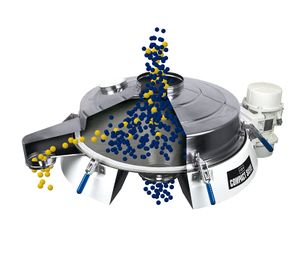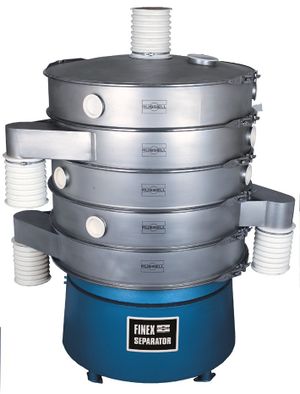Sieves
A sieve, or sifter, separates wanted elements from unwanted material using a woven screens such as a mesh or net.
However, in cooking, especially with flour, a sifter is used to aerate the substance, among other things. A strainer is a type of sieve typically used to separate a solid from a liquid. The word "sift" derives from sieve.
Sieving
Sieving is a simple and convenient technique of separating particles of different sizes. A small sieve such as that used for sifting flour has very small holes which allow only very fine flour particles to pass through. The coarse particles are retained in the sieve or are broken up by grinding against the screen windows. Depending upon the types of particles to be separated, sieves with different types of holes are used. Separating tea leaves from tea is not considered to be sieving.
Mechanical Vibratory Sieves
Mechanical vibratory sieves also commonly referred to as gyratory separators or screeners, are a traditional part of processing dry bulk powders. They classify materials by separating them by particle size through a screen mesh. Using a combination of horizontal and vertical movements by means of a vibratory motor, they spread the material over a screen in controlled flow patterns and stratify the product.
There are three main functions a vibratory sieve or separator can achieve:
- Check/safety screening: used for quality assurance by checking for foreign contaminants and oversized material and removing them from the product.
- Grading/sizing screening: used to grade or classify material into different particle sizes.
- Recovery screening: used to recover valuable materials in the waste stream for re-use. Most machines vibrate at 1400 rpm, but by separating the motor from the rubber suspension in this type of design, it became possible to increase the operating speed of the machines up to 2800 rpm with high out-of-balance forces. This development led to increased efficiency of the sieve, enabling smaller diameter machines to be used without adversely affecting performance. For example, a 22” diameter machine operating at 2800 rpm can significantly out-perform a 48” diameter machine operating at 1400 rpm on materials which are traditionally difficult to screen.
Video

